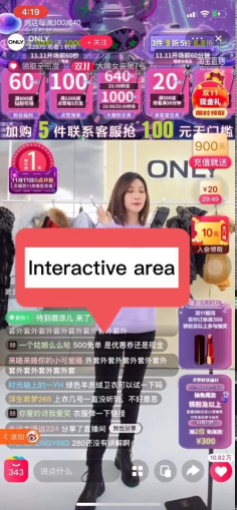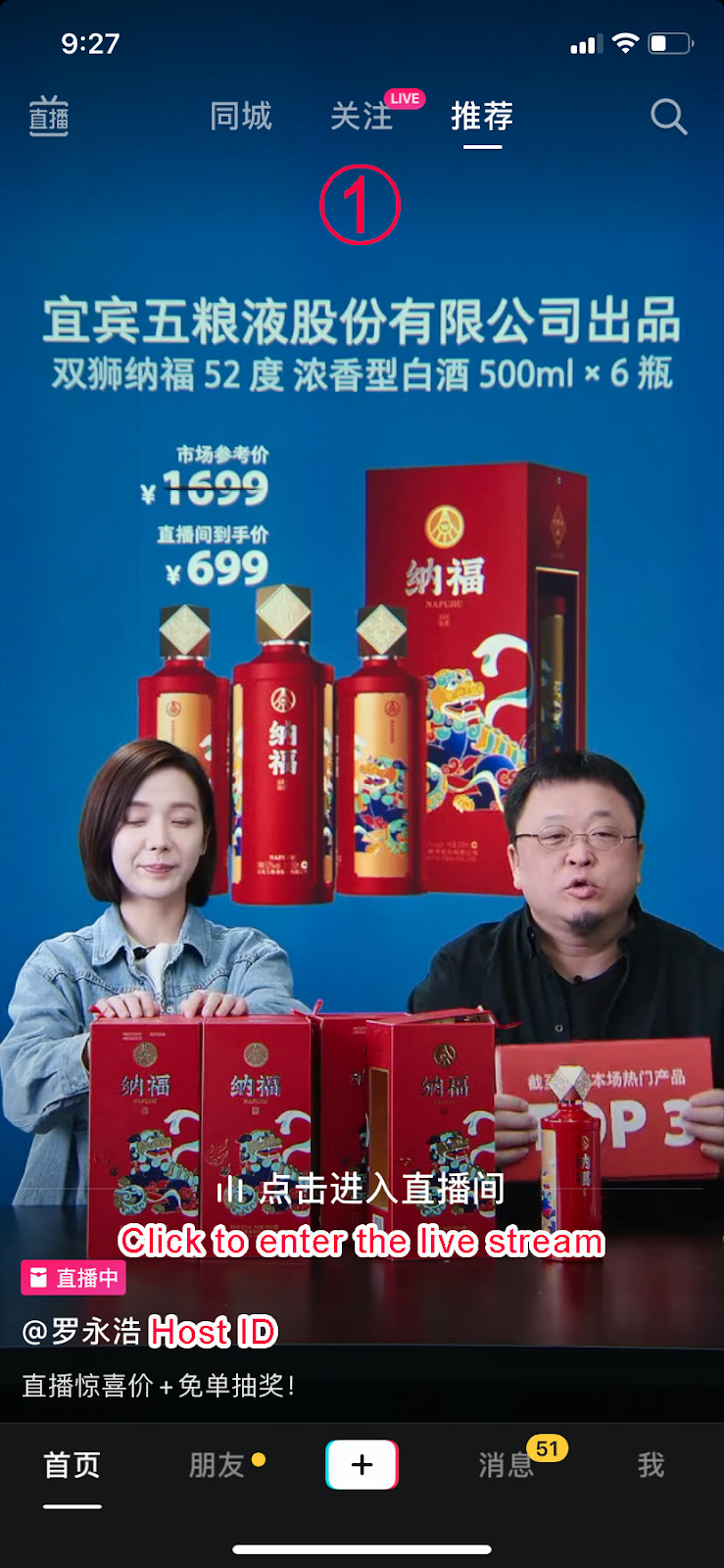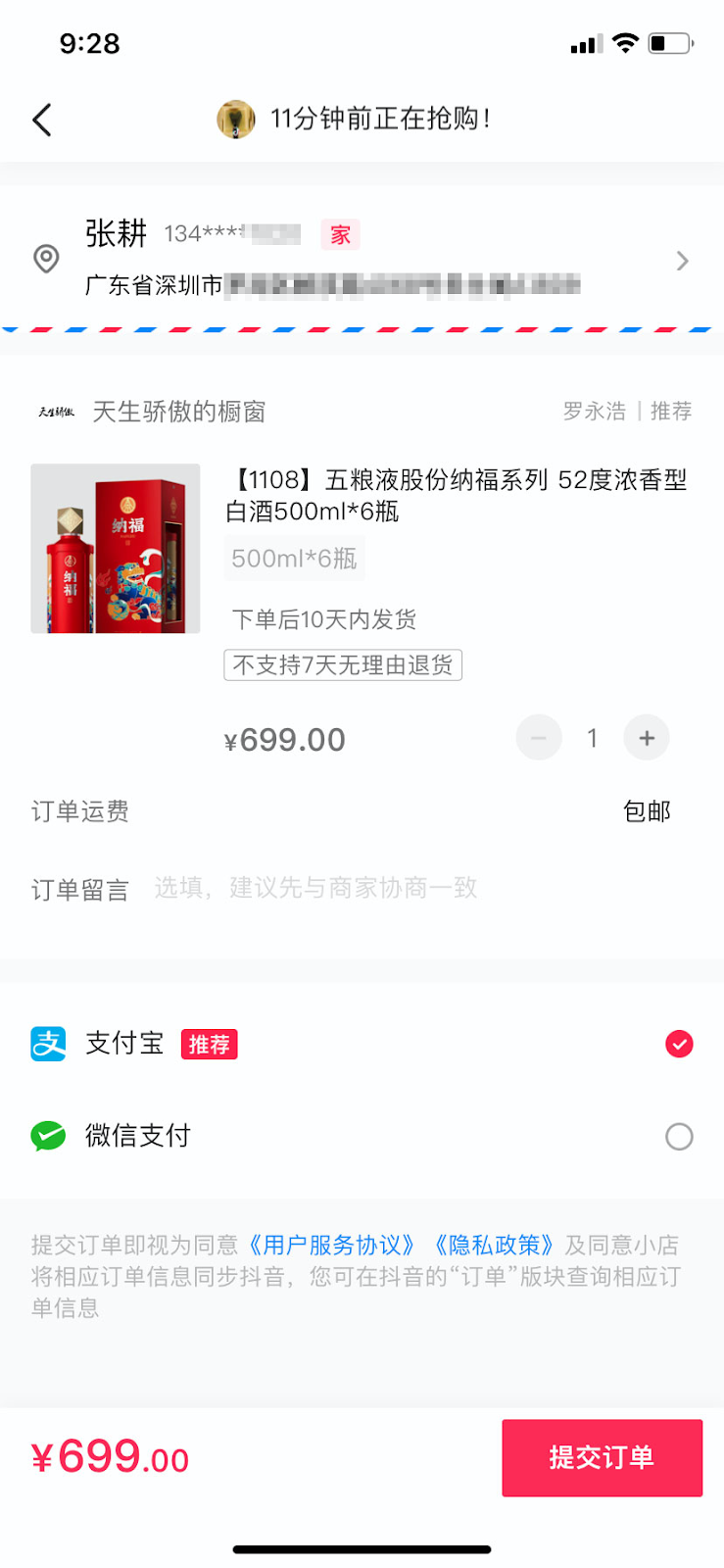
What: livestreamed e-commerce, a huge trend in China this year, combines two eminently addictive behaviors: livestreaming and online shopping. For 2-3 hours at a time, influencers, brand reps, and celebrities on platforms like Douyin (Chinese Tiktok), Weibo (Chinese Twitter), and Taobao (Alibaba’s flagship e-commerce site) introduce products, give demos, share discounts, and exhort viewers to buy.
Why is this interesting:
- It’s been incredibly effective: livestreamed e-commerce brought in roughly $130 billion in sales this year in China, up from $63 billion in 2019, and featured heavily in the 11/11 Singles shopping day (Chinese Black Friday.)
- Meanwhile in the US, livestreaming still remains mostly the purview of video gamers; it hasn’t really penetrated e-commerce, and the numbers reflect that—the market is valued at only $5 billion. But given its success in China, Western platforms like TikTok, Instagram, Facebook, and Amazon, as well as a spate of startups, are looking to bring it to the U.S. in a big way.
In the rest of this article we will walk through the mechanics of livestreamed e-commerce in China: how are the streams discovered, what happens during a stream, who are the hosts, and how do they make money?
How It Works
Livestreams are usually 2-3 hours and feature 20-30 items for sale. Users find the stream by browsing their social feeds on Weibo or Douyin, through a push notification on their phones, or even through in-person advertising. For example, this billboard in a Beijing railway station advertising a stream:
What happens during the stream
Livestreams are used to sell everything from cellphones to lipstick to cars, but products that do particularly well are commodity products like toothpaste, and items that viewers like to see modeled, like clothing.
Hosts will do a variety of things depending on the product they’re showcasing. For example, if the stream features makeup then the host may do a tutorial to demonstrate how to use it. Or, if it features apparel the host will try on the clothes during the stream.
The vibe on the streams also varies depending on the host. Some rely on a sort of slapstick humor that’s typical on Chinese variety shows. Others do a lot of dramatic overreactions (sort of like gamers on Twitch).
Still others cultivate more of a talkshow/podcast/The View type vibe. For example, to sell luxury mouthwash, one host talked about her career as an interviewer. After years interviewing everyone from ordinary citizens to movie stars, she explained how she became more aware of how much people were affected by someone else’s bad breath—and used that to showcase the product.
The livestreams generally have a pop-out that takes the user directly to the product page, where you can pay with Alipay or WeChat Pay.
More about the hosts
Livestream hosts run the gamut from being employees of the brand they’re selling, to employees of the platform, to TV anchors, to CEOs. But many of the most successful livestreamers are independent influencers—they’re ordinary people, who have built a trusted following with their audience. They’re usually paid by the brand with an advance, and then a cut of the final sales.
A few of the most well-known professional e-commerce hosts are:
- Weiya— a fashion and beauty influencer. She originally won China’s Super Idol reality TV contest and parlayed that into a streaming career doing more than $200 million in sales / month.
- Luo Yonghao — an early internet entrepreneur, equivalent to Donald Trump prior to his becoming president. Yonghao originally built a company selling smartphones that went bankrupt—but now he’s made a second fortune with livestreaming.
But there are also many other types of streamers:
- The CEOs of large companies like Xiaomi will do one-off live e-commerce events. This is equivalent to Elon Musk getting on a Facebook Live with Joe Rogan to hawk Teslas for three hours.
- Traditional TV anchors have also entered the live e-commerce game (for instance hosts from CCTV, the government-owned broadcaster.)
Streaming is getting so popular that China even has a live e-commerce village—Yiwu City in central Zhejiang Province, which is home to 1,000 e-commerce companies, 40 branches of express delivery companies, and 5,000 internet influencers who make money by promoting products via livestreams.
Why do viewers watch?
Entertainment. Viewers primarily watch for entertainment. Especially during the pandemic there’s not much else to do. But streamers have found ways to make their shows extremely engaging, even if you don’t buy the products they’re offering.
Trust. Seeing someone actually demonstrate use of the products brokers trust, especially for lesser known brands. The Chinese retail market is awash with shoddy or fraudulent products, so buying products through someone with whom you feel you have a real relationship is valuable.
The trend in live e-commerce has been for the streams to get closer and closer to the source of production. For example, a flower farmer might take viewers on a tour of their flower garden, show the characteristics of various flowers, and explain how to care for them. Live e-commerce enables the manufacturer to speak directly to the customer, and to do so from a position of trust.
Discounts. Prices on livestreams can be more than 50% discounted. This is significant, because the audience for these streams is primarily composed of people from more price conscious cities and regions, rather than big spenders from Beijing, Shanghai, or Shenzhen.
Live e-commerce and the Chinese government
Live e-commerce has gotten so big that the Chinese government is taking note—and using it themselves. It is pushing live e-commerce as a way to jumpstart the rural economy after the pandemic, by, for instance, having local governments host events on state-sponsored TV channels to fill local coffers.
- Local government officials will host streams to sell their region’s products.
- Private training agencies go to villages and teach the farmers how to stream.
- There has even been some state-driven promotion, for example during the pandemic TaoBao organized a 14-hour live e-commerce stream to support businesses based in Hubei, the province around Wuhan, which had been hard hit.
What does this mean for Western e-commerce?
While live e-commerce has its roots in American stalwarts like infomercials, The Shopping Network, and QVC, the trend hasn’t taken hold as much in the US. We hypothesize for a few reasons:
- Lack of easy payments infrastructure. US consumers, for instance, are far less likely to have their credit card added to Instagram or Facebook, whereas in China, Alipay and WeChat pay are ubiquitous.
- Due to decades of consumer protection in the US, there isn’t as much of a trust issue when it comes to buying something new.
Even still, American e-commerce and media platforms are all dipping their toes in the livestream strategy:
- Amazon is moving in this direction, but there’s very little coverage of what they’re doing so far. Twitch, which is owned by Amazon, is probably the most similar in terms of UX/UI to the Chinese live e-commerce platforms, and is probably the place where they will start.
-
Facebook launched Facebook Live Shopping, and Instagram, which is owned by Facebook, is testing out Instagram Live Shopping
- A lot of personal shoppers are doing some version of this on Instagram Live, for example: DesignerHaul
There are also independent startups popping up in this space:
- TalkShop.Live is a livestreaming platform specifically dedicated to e-commerce.
- A startup called PopShop Live just raised a $3 million seed round from Floodgate to compete in the space.
The bottom line
The previous generation’s version of the e-commerce livestream, QVC, is a massive business in the U.S. In 2019, they generated $10.8 billion in revenue, and though their audience numbers are hard to come by—viewership is up at least 10% since the pandemic began.
QVC’s market is livestreaming’s opportunity, and despite the differences between the US and China e-commerce industry, we believe it’s only a matter of time before livestreamed e-commerce becomes a huge phenomenon here as well.
How did you feel about this post?
The Only Subscription
You Need to
Stay at the
Edge of AI
The essential toolkit for those shaping the future
"This might be the best value you
can get from an AI subscription."
- Jay S.
Join 100,000+ leaders, builders, and innovators

Email address
Already have an account? Sign in
What is included in a subscription?
Daily insights from AI pioneers + early access to powerful AI tools

















Comments
Don't have an account? Sign up!